To analyze and detect malware, Juniper ATP Cloud performs which two functions? (Choose two.)
Exhibit
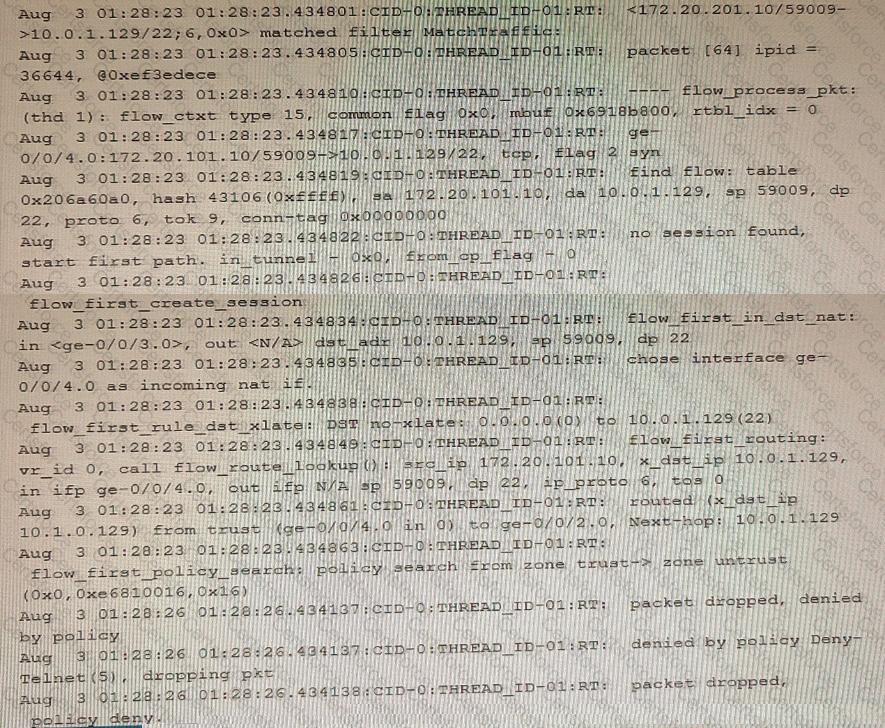
Which two statements are correct about the output shown in the exhibit. (Choose two.)
Exhibit
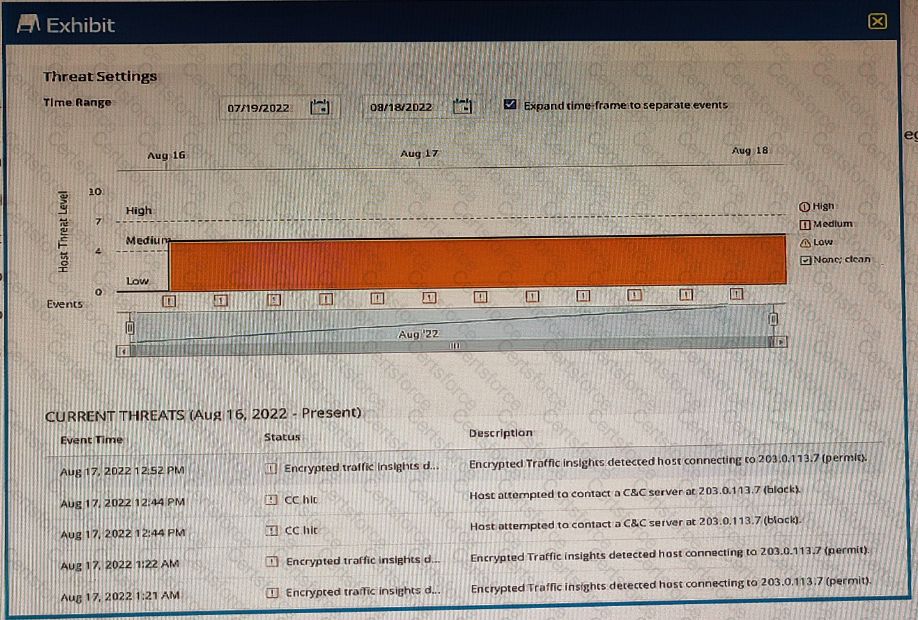
You are using ATP Cloud and notice that there is a host with a high number of ETI and C&C hits sourced from the same investigation and notice that some of the events have not been automatically mitigated.
Referring to the exhibit, what is a reason for this behavior?
Exhibit:
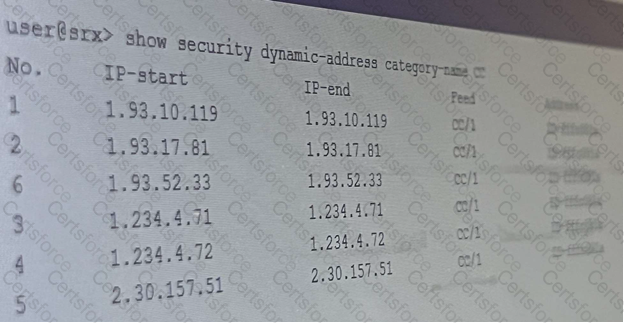
Referring to the exhibit, which two statements are correct?
Exhibit.
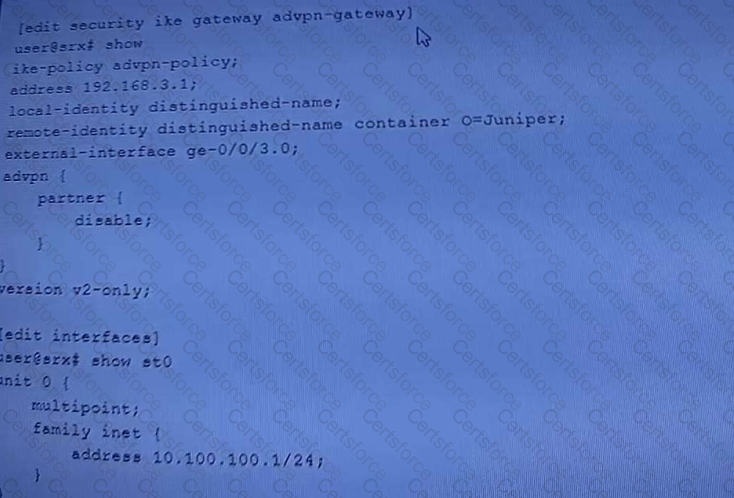
Referring to the exhibit, a spoke member of an ADVPN is not functioning correctly.
Which two commands will solve this problem? (Choose two.)
You are asked to configure a security policy on the SRX Series device. After committing the policy, you receive the “Policy is out of sync between RE and PFE
Which command would be used to solve the problem?
Exhibit
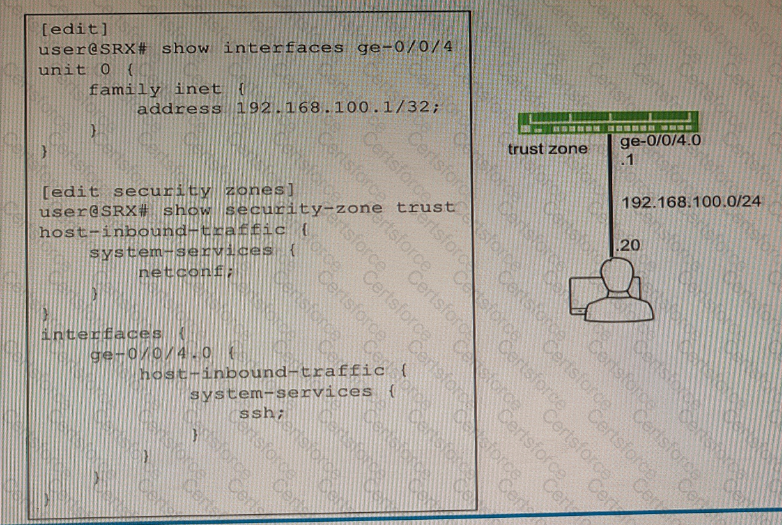
You are not able to ping the default gateway of 192.168 100 1 (or your network that is located on your SRX Series firewall.
Referring to the exhibit, which two commands would correct the configuration of your SRX Series device? (Choose two.)
A)

B)

C)

D)

You configured a chassis cluster for high availability on an SRX Series device and enrolled this HA cluster with the Juniper ATP Cloud. Which two statements are correct in this scenario? (Choose two.)
Exhibit

You are validating bidirectional traffic flows through your IPsec tunnel. The 4546 session represents traffic being sourced from the remote end of the IPsec tunnel. The 4547 session represents traffic that is sourced from the local network destined to the remote network.
Which statement is correct regarding the output shown in the exhibit?
you configured a security policy permitting traffic from the trust zone to the untrust zone but your
traffic not hitting the policy.
In this scenario, which cli command allows you to troubleshoot traffic problem using the match criteria?